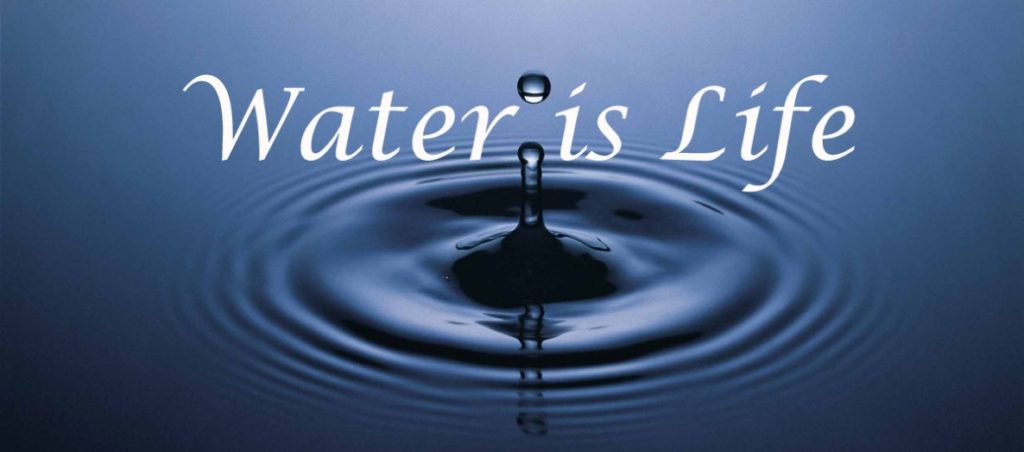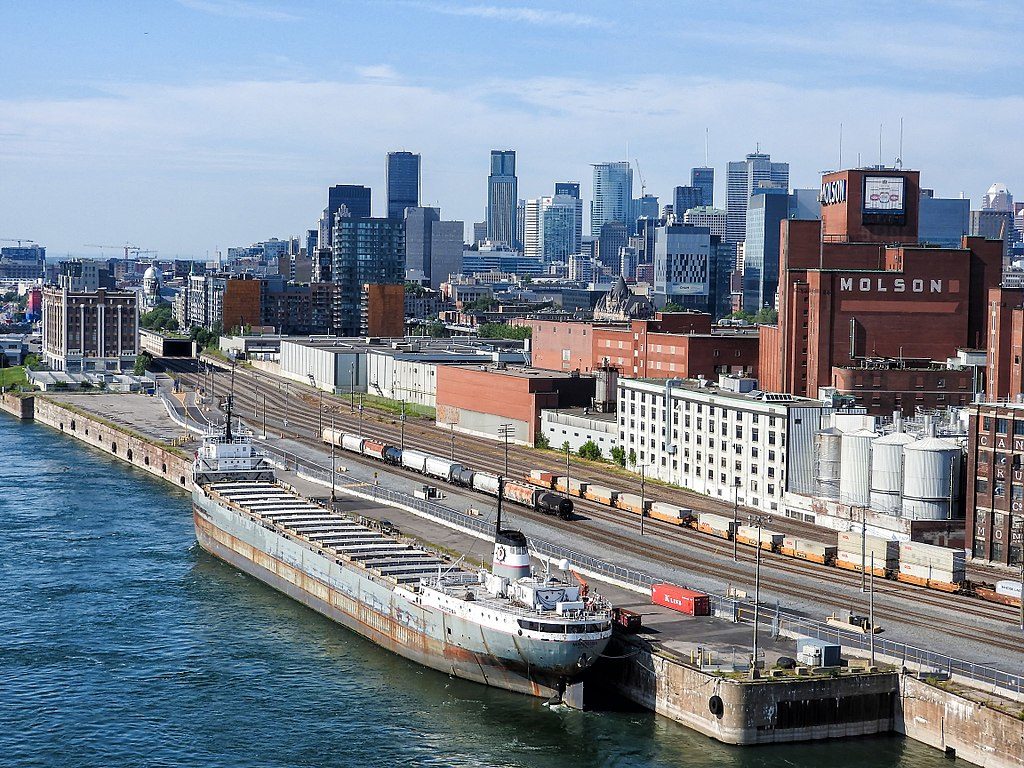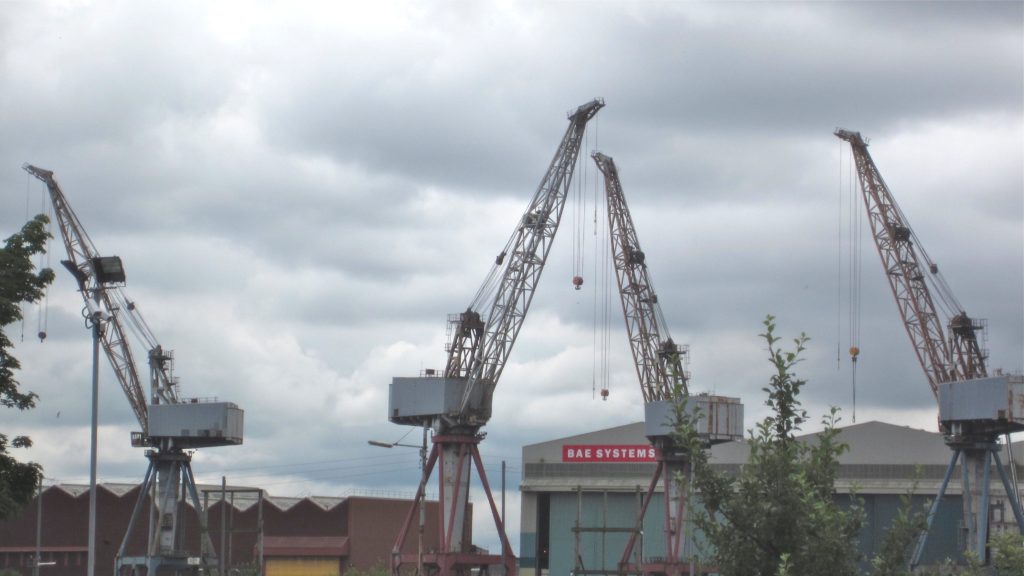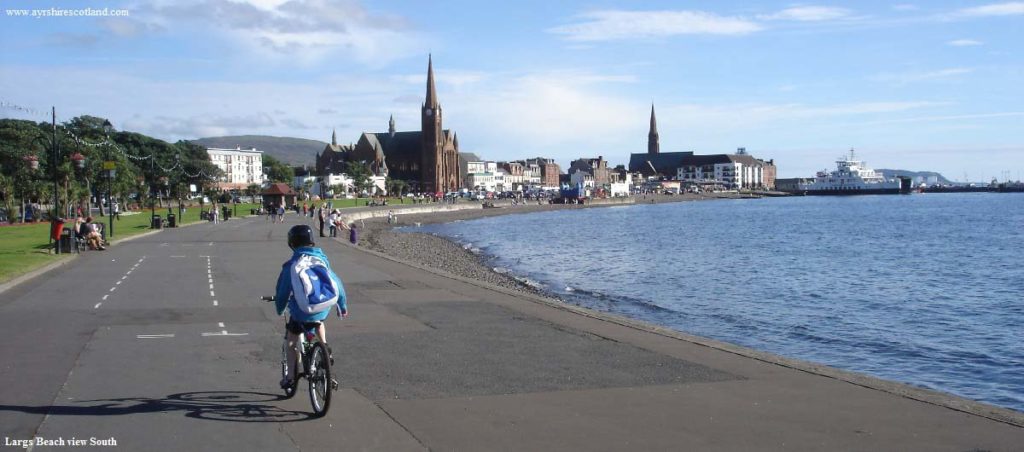Leonardo da Vinci believed that water was to the world as our blood is to our body. It is a vehicle of nature and connects all to all. Streams, rivers, seas and oceans all speak to the flows of energy and connection through our lives as Unitarian Universalists, as people, and as living beings inhabiting this planet. A common, an almost lowly substance that flows out of our taps whenever we want it, water is what we are made of, what we are thirsty for and what we oft use to symbolize the energy linking us one to another.
Leonardo wrote: “The body of the earth, like the bodies of animals, is intersected with ramifications of waters which are all in connection and are constituted to give nutriment and life to the earth and to its creatures…We might say that the earth has a spirit of growth; that its flesh is the soil, its bones the arrangement and connection of the rocks of which the mountains are composed, … and its blood the springs of water.”
The Water theme was chosen by the Canadian Unitarian Council for this year’s Sharing Our Faith service and the materials they provide have reflections both on water or bodies of water as a source of awe, a sense of connection, a place of worship (as in the song ”As I went down to the River to Pray”) and also as a great metaphor of the ecological system of the Unitarian Universalist movement.

Rev. J. P. Rodela explains: ”Our Canadian Unitarian Universalist Congregations too are rivers. Singular in their diverse complexities and yet co-created by those who exist within them. Mergers and splits, offshoots and collaborations, our communities blend together and pull apart as we wind our ways through life.
As we reflect on water today let us remember that we are part of a larger system of Unitarian Universalism. An “eco”-system that helped to create, sustain and connect our individual communities. With the mission to enhance, nurture and promote the … Unitarian Universalist religion in Canada, the Canadian Unitarian Council acts like a river connecting the tributaries of all our faith communities. We now have an opportunity to directly engage with the other tributaries, with the other faith communities so connected, through this Sharing Our Faith service.”
Being an intellectual kind of person, I like a good metaphor as much as the next person. And I do appreciate the larger socio-cultural eco-system in which our congregation functions, as we support our denomination and it helps spread the message of our faith community, watering the soil of liberal religion, which hopefully will bring more persons to our beloved community.
Nonetheless, I would like to spend some time talking about water in its most wet reality both in our collective history and in my own personal story.
Where are we?
Here we are sitting in a church built by a lake, part of an immense river and lake system which has allowed human beings to migrate and trade over vast distances for thousands of years. The First Nations on whose lands we now live established a major settlement on this island thanks to its ideal location at the confluence of waters. Because of the diversity of lands upon which First Nations lived, trading agricultural and other products was a vital activity for many communities.
Hollywood has often given us a biaised view of the First Nations as basically hunters and trappers, but in reality they were mainly farmers and fishermen. Even the forests of the New World, mistaken by early European explorers as virgin forest, were, in fact, the result of centuries of plantation and cultivation by the original natives of these lands.
You may recall that in April last year, we had chief Christine Zachary-Deom from Kahnawake speak to us about Reconciliation. She notably told us about the importance of fishing to her community during her childhood before the Seaway was built. Unfortunately, it cut her reserve off from the Saint-Lawrence. She recalls her mother taking her and the other kids down to the river in the evening where the men were gathered to sing to the fish, in hopes of being rewarded with a season of good catches. And these fishermen respected the ecology of the waters they exploited and did not exhaust this resource by overfishing. They also knew to give thanks to the fish and the other animals whose lives they took to sustain their own.
In the monotheistic Abrahamic religions, the sacred or holy has apparently become more detached from the living environment upon which we all depend and we have trouble recognizing our place in the web of life and giving thanks not only for our own life but for all the lives that sustain us whether they inhabit the earth, the waters or the skies. Yet, in Christianity, water has sacred rôle, as in Holy Water, as in Baptisms by full immersion in a river or lake.
Water though does more than move our spirit; it is also moves our embodied selves and our things.
You might know that Napoleon’s Armies in invading Russia moved hardly any faster than the Roman Legions two thousand years before. Until the invention of steam locomotives and rail lines in the early 19thcentury, traveling by land was slow and often difficult. The best way to move any large quantity of goods or numbers of people before the Age of Steam was by barge and ship.
Today, we are now part of a metropolitan region built up around that same confluence of waters which attracted the First Nations. It has made Montréal a major world port. Though to be honest, we largely turn our back to the working port, wanting it moved away from its historic heart in the Vieux Port, now transformed into a history-flavoured tourist and recreation area, much as one can find in Boston and in so many other repurposed historic ports around the world. I guess the actual business of sailing in the age of diesel has lost its much of its romance.

But we shouldn’t forget our history. Most of us or, at least, most of our ancestors got here from Europe on ships. Along with the willing adventurers setting out for a hopefully better life here, there were vast migrations of people brought over the waters: slaves, indentured servants or desperately poor and dispossessed people.
Scott MacLeod, who will be with us next week, presented us, four years ago, his film, The Saga of Murdo MacLeod and His First Contact with the Abenaki, about Scottish settlers, driven from their land, who came to Québec and, completely unprepared for their first winter, were helped to survive by the Abenaki people.
In preparing this talk, I was charmed to learn that the box set of four of Scott’s films about European settlers and the Abenaki is called the Water of Life. These stories are told by a group of smugglers hiding out in a cabin in the woods during Prohibition, drinking from the sole bottle of the water of life left to them.
In very much better circumstances than those of those early settlers, I have myself crossed the Atlantic Ocean five times by ship. With a modern steel ship, it takes about five days. It was, of course, in another century. These days, comparatively few people want to spend that much time on a boundless expansion of water. So aviation has replaced shipping for the vast majority of long-distance passenger travel.
Yet the distribution of population and industries across our lands still reflects the heritage of centuries of water-borne travel. Even today 90% of world trade is carried by the international shipping industry. Our global economy is vitally reliant on maritime transportation. Water rules !
And it has a mighty impact in all its phases: Vapour as in a steam engine or steam turbine, liquid water as in the maritime navigation we just spoke about or, in a third phase, that of ice, where it can be just sometimes a problem for movement. So we had all that beautiful snow this past week to make us wax poetic: Ah ! comme la neige a neigé !
But it sure didn’t make getting around too easy. Trying on a pair of snowshoes to get out of my house Wednesday morning was a brutal reminder that I was no longer the age that I once was … if you get my drift … without getting stuck in it.
When I was a wee boy in Scotland, I didn’t know this kind of weather. We might occasionally have a little overnight snow in winter, which would rapidly turn to slush and disappear, as the light of day warmed us ever so slightly. So a deprived childhood then: no snowmen, no sleds, no skiing, no falling down on the ice.
Not too much sun either, but lots of changeable weather with frequently clouds (water vapor) and rain (liquid water). And the consequences of that: rivers and deep green vegetation. As those of you who attended my Service Auction event, An Evening in Glasgow, know, the name of my home town, Glasgow, comes from a gaelic expression, meaning: ”dear green place.”
On the photos I showed of Glasgow, one sees the River Clyde, the main river on whose banks Glasgow was built, and the smaller River Kelvin, which flowed through the neighbourhoods which my family frequented. Also figuring in that presentation were dark green riverside walkways, motor bridges, rail bridges, pedestrian bridges and the once world famous Clydebank shipyards.

Back in the Glasgow of my childhood, I lived about 1 km from the banks of the River Clyde; Clydebank was the historic home of Scotland’s shibuilding industry. A century ago, Glasgow was one of the greatest centers of shipbuilding in the world. Still a vital center during WW2, it was a major target for German bombers.
So thanks to the proximity of my 1950s childhood home to Clydebank, I had a wonderfully bumpy and wild little unofficial park to play in. It was created a few years before by bombs meant for the nearby shipyards, but oblitering instead a block of houses just round the corner from my future home. I don’t know what happened to the residents. Lets hope they were in a shelter.
Back in the 1950s, we also left Glasgow to go on holidays. Not flying to sunny Spanish beaches like today’s Scots, but climbing on a train to go to Scotland’s Southwest coast looking out on the ever so warm Irish Sea. Fond memories of sitting huddled on a pebble beach, hoping it wouldn’t rain … again. Not a speck of sand in sight. But still there was magic in the roar of the sea and the cry of the seagulls. Ah, the sweet memories of childhood holidays at the Scottish seaside.

Now here, on a really windy day, when the waters of Lac-St-Louis, only 200 m from my Lachine home, get all whipped up and the waves crash on the shore, I feel the sea is not far away. And in whatever weather, when I hear the seagulls cry along the Lakeshore, my heart is in a happy place. That instant of happiness from the cry of a gull appears out of nowhere, with no seeking for happiness, just a chance reminder of the life I have lived and am living.
Both the Rumi poem, The Water We Seek, which I read at the opening, and the song, O Come, You Longing Thirsty Souls, which we sang a few minutes ago, use the thirst for water as an image of our profound desire for connection with our Ultimate Truth, with life as it manifests itself in each of us throughout our own journey. The song uses the presence-at-hand of the spring water to assure us of the abundance available to satisfy our soul’s needs, if only we would deign to drink freely from the source.
However, Rumi, in his poem, reflects on how easy it is to get distracted by dreaming of finding what your heart desires in a better place and ignoring the stream of life flowing through you. He writes: ”While he dreams of the pangs of thirst, the water is closer than his jugular vein.” The dreamer sees a mirage of water in the distance and runs from the reality of his thirsty body lying beside the stream.
Am I the Dreamer? Where am I?
So how do I get in contact with my body, my self where it really is?
Recently, I have been using a meditation application on my phone to spend time with myself, to turn off the ceaselessly played cassettes of worries, plans and assorted supposedly bright ideas that run through my head and to become more mindful of how I feel as I lie in my room, smelling its odors (thanks to a candle – a Christmas gift from a good friend) and the soundscape provided by the application. These sound environments are meant to help you let go of the mental and live in the present moment.
Often they feature water: rain falling, a small waterfall, the waves hitting the shore.
For me, there is something quite comforting, even soothing in the sounds of moving water … whether it is a recorded soundscape or the actual sound of the waves crashing on the Lac-St-Louis shore by my home. It is a profound music of nature and a powerful reminder that we are part and parcel of the natural world.
A world we need to listen to.
Do not dream. Awake and listen.
Christopher Thomson – 2019-02-17
